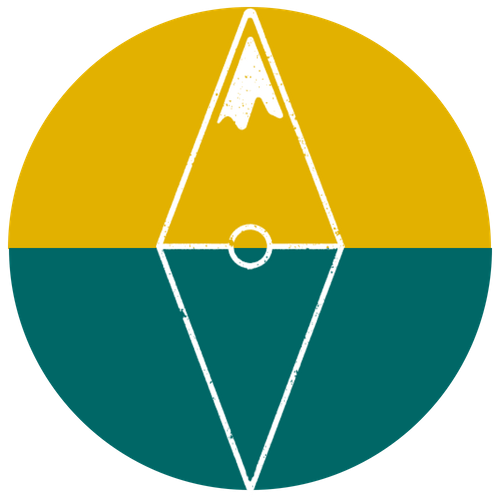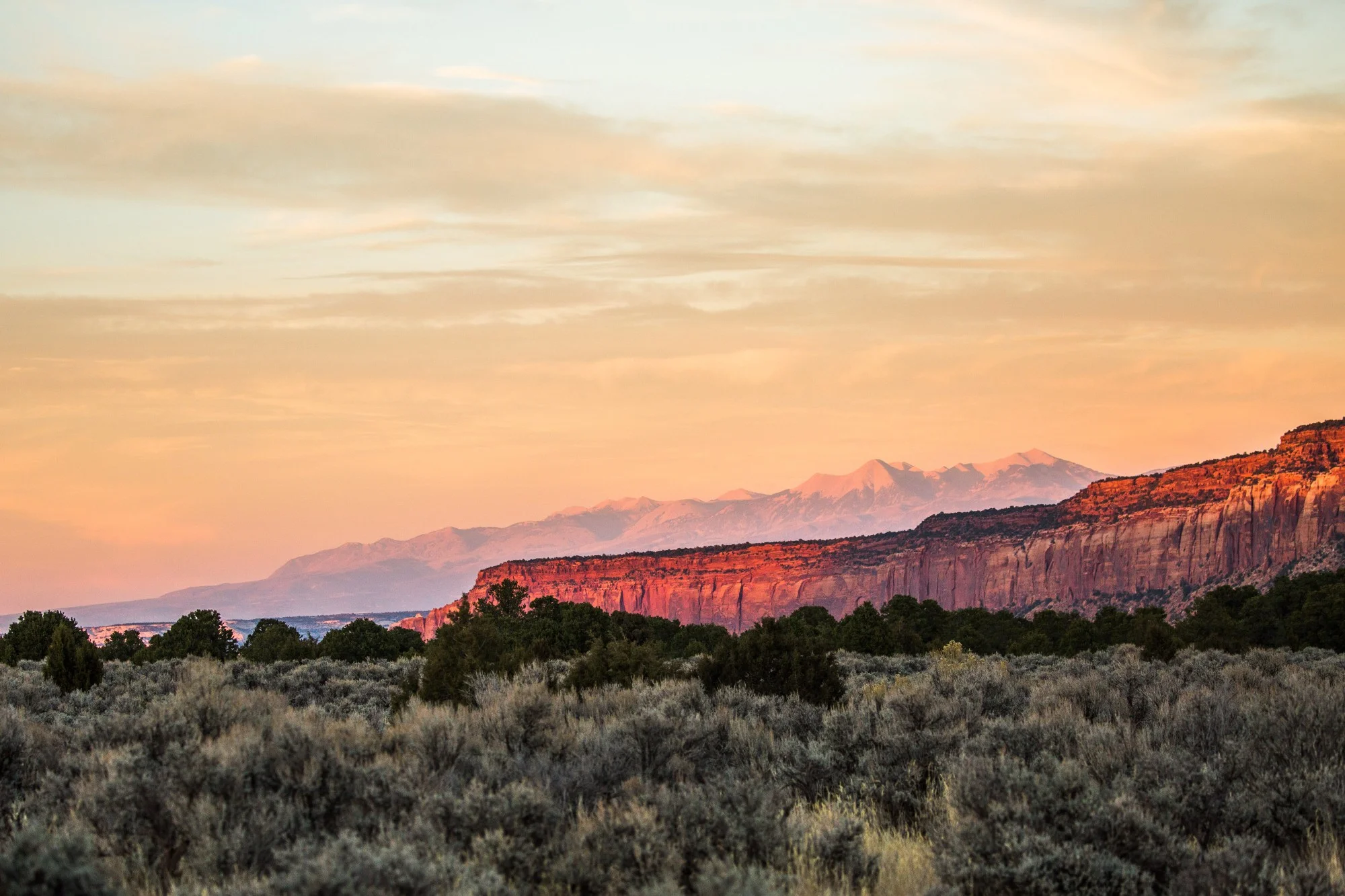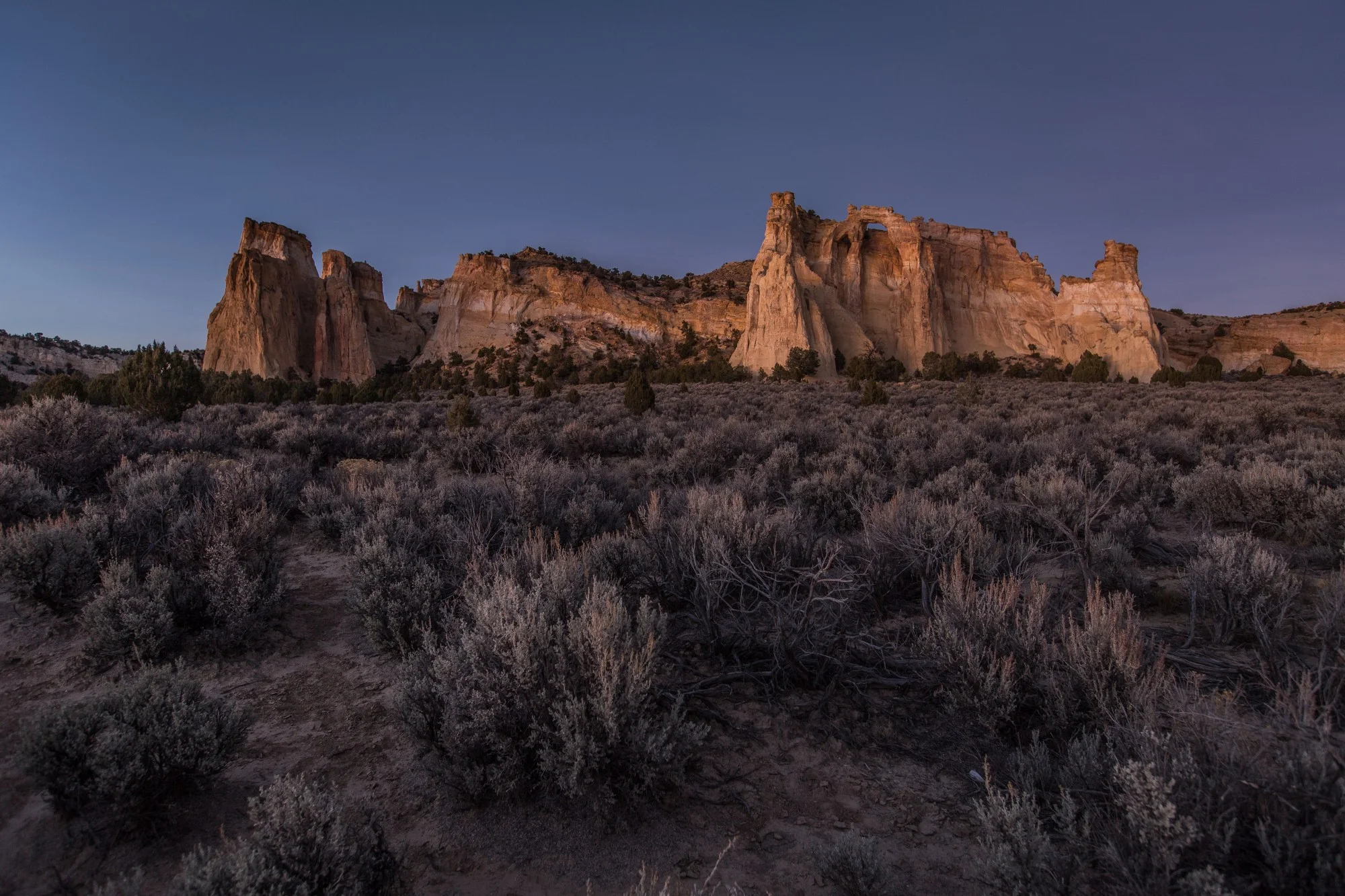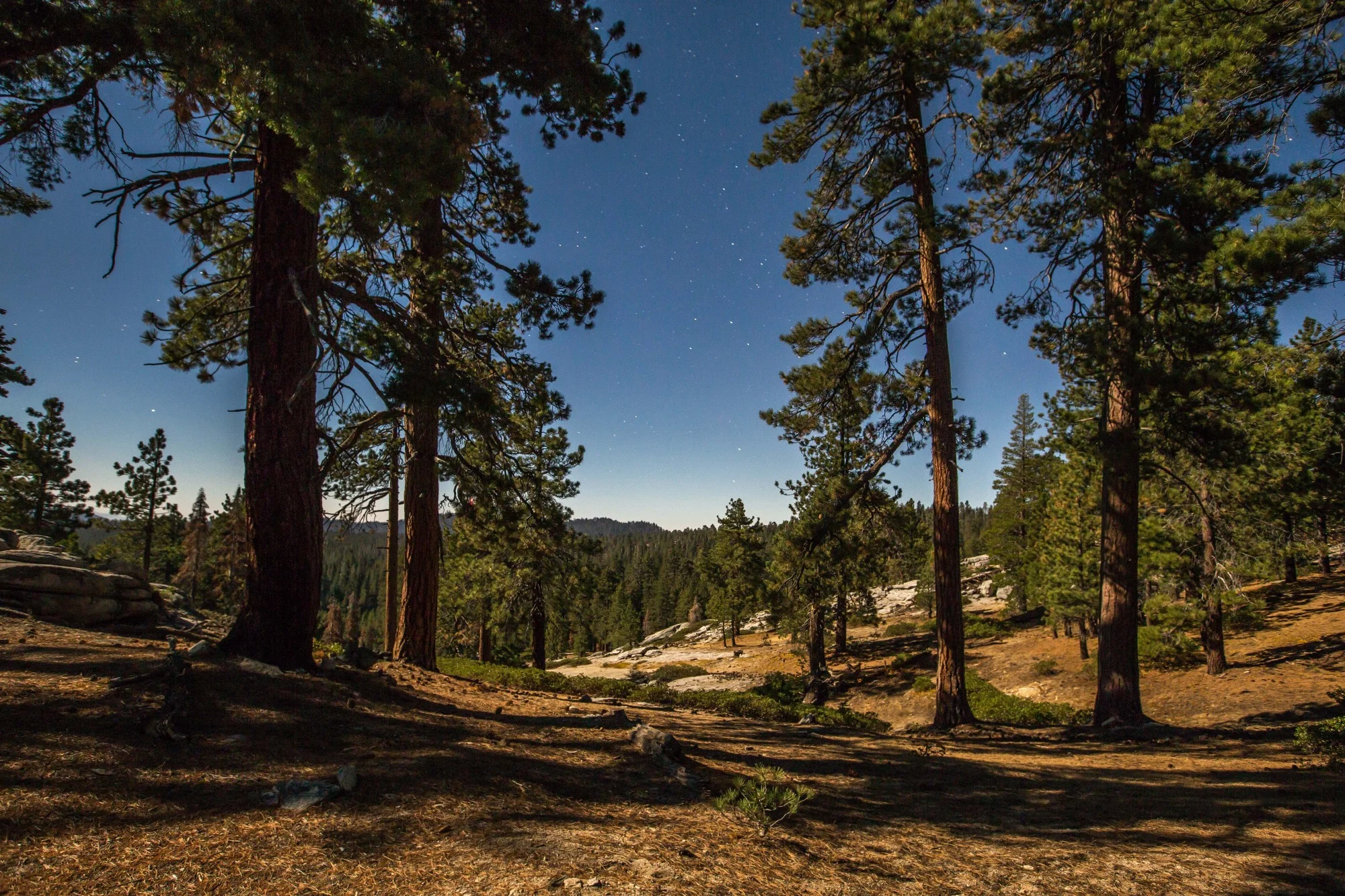CARRIZO PLAIN NATIONAL MONUMENT - California's Largest Intact Grassland
Soda Lake and the Temblor mountain range in Carrizo Plain National Monument, California
"It’s very scenic and beautiful. Right now the grasses have all dried up and the wildflowers have gone, the shrubs are looking pretty good, but if you come out here in the springtime, especially this year, the wildflowers would just knock your socks off. That’s just how it is – it’s absolutely a wonderful place." - Neil Havlik, Carrizo Plain Conservancy
If you look at a topo map of the state of California, you’ll first notice a lot of mountains, but right in the middle of the state is a vast flat area. This is the famous Central Valley of California which is about 50 miles wide and 450 miles long. The drainages of the valley are split for the most part into two areas, the Sacramento Valley to the north, and the San Joaquin Valley to the south. It has become one of the most productive agricultural areas of the world, producing more than half of the fruits, vegetables and nuts grown in the United States. And although this all might taste great to us, the changes in the landscape due to irrigation, plowing, and development have, for the most part, destroyed the rich habitat that was once home to huge populations of pronghorn, tule elk, and many small mammals, reptiles and migrating birds. In fact, only 1% of the original grassland valley ecosystem is still intact.
Carrizo Plain National Monument is the largest remaining native grassland in the state of California, and though technically not part of the Central Valley (there’s a small mountain range that divides them), the ecosystem within the monument is very similar to that which made up most of the Central Valley prior to it being converted to agriculture. We had the opportunity to speak to both Neil Havlik and Steph Wald with the Carrizo Plain Conservancy, which is currently actively trying to increase the monument’s size.
Coyote (Canis latrans)
A coyote hunting rodents among the grasses in the Carrizo
“It was considered very similar biologically to the Southern San Joaquin Valley,” Neil tells us about the monument. He helped with the formation of Carrizo Plain National Monument and is the retired Natural Resources Manager of the City of San Luis Obispo. “And the San Joaquin valley is gone due to agriculture and big cities such as Bakersfield and Fresno. It’s become either urbanized or gone into intensive agriculture. The Carrizo Plain didn’t do that. The natural habitat and the hills of course were never plowed up. There were thousands and thousands of acres that were put to the plow for decades down on the California Valley floor, but the hills have retained their shrubs, the small trees – Junipers and that sort of thing, scrub oak, native grasses and wildflowers. We have a number of endangered species: giant kangaroo rat, San Joaquin kit fox, San Joaquin antelope squirrel, blunt-nosed leopard lizard, and there’s more. And then we have what they call the mega fauna. We have tule elk that were established in the plains some years ago by the Department of Fish and Game, and they’re doing well. And pronghorn antelope - who are kind of struggling, I think this is maybe a little too hot and dry for them - but they’re hanging in there. Efforts have been made and continue to improve the habitat for them. Plus, because of the sparse water, things never got populated. It’s still pristine landscape. There’s no housing or anything like that, there may be a few scattered places here and there, but not much has been done. So there’s this pristine quality to it. And the solitude, the serenity - I mean here I am on a hill right now, overlooking the Carrizo Plain, and I can see what looks like it might be a trailer about 10 miles away, but that’s it! On a clear day it’s incredible. And so there’s just this beauty, there’s a real serene beauty. There’s opportunities for solitude here, you get off the main roads like I am and it’s just gorgeous. It’s very scenic and beautiful. Right now the grasses have all dried up and the wildflowers have gone, the shrubs are looking pretty good, but if you come out here in the springtime, especially this year, the wildflowers would just knock your socks off. That’s just how it is – it’s absolutely a wonderful place.”
“SO THERE’S THIS PRISTINE QUALITY TO IT. AND THE SOLITUDE, THE SERENITY — I MEAN, HERE I AM ON A HILL RIGHT NOW, OVERLOOKING THE CARRIZO PLAIN, AND I CAN SEE WHAT LOOKS LIKE IT MIGHT BE A TRAILER ABOUT 10 MILES AWAY. BUT THAT’S IT! ON A CLEAR DAY IT’S INCREDIBLE. AND SO THERE’S JUST THIS BEAUTY, THERE’S A REAL SERENE BEAUTY.”
side-blotched lizard (Uta stansburiana)
A common side-blotched lizard, greeting us along one of the few short hiking trails within Carrizo Plain National Monument.
The national monument is a very easy place to visit. It’s less than two hours from LA, making it an easy day trip for a number of CA residents or visitors. The monument hosts the highest concentration of federally and/or state endangered species in California, including the critically endangered giant kangaroo rat, which is the largest kangaroo rat in the world. The monument is an especially important protected area along the ‘Pacific Flyway’, a migrational path for many species of birds including sandhill cranes, Swainson's hawks, and varied thrushes.
Visitors can stay at two well-built campgrounds within the monument, and aside from viewing wildlife, they can hike along the San Andreas Fault or to the Painted Rock, a pictograph rock art site that was used by the Chumash, Salinan and Yokuts peoples for thousands of years. There is also the Goodwin Education Center within the monument which provides information regarding the biodiversity, the geology, and the human history of the area.
San Joaquin antelope squirrel (Ammospermophilus nelsoni)
The San Joaquin antelope squirrel is an endemic species of antelope squirrel, native to the San Joaquin valley and Carrizo Plain National Monument. Their populations have greatly decreased due to habitat loss and use of rodenticide, and they are listed as a threatened species. They are extremely skittish and we were lucky for this one to hold still long enough to snap a photo.
But the monument’s biggest claim to fame are the super blooms that happen only on years when the conditions are perfect. 2017 was one of those years. Steph gives a little more context about the super blooms: “I was there last Easter when the super bloom was going. It’s about a three week period, and it doesn’t happen every year. We’ve been in a drought, and this last year we had a substantial amount of rain out there and that’s why the super bloom happened. But prior to the 2017 super bloom, probably for six years before that, even after brief rains there wasn’t much. Maybe there was only one or two inches of rain, as opposed to five or six, and that was a lot for the Carrizo.” If one searches for images of the Carrizo Plain super bloom, extremely colorful photos of wildflower-covered hillsides will pop up, many of which do not even seem possible. And that brought a lot of attention to Carrizo Plain National Monument. “The super bloom went worldwide, I mean literally – you probably Googled it so you saw it – but there were pictures of it from space, that kind of stuff. It was nuts. There was coverage coming from all over the world about it.”
As far as opposition goes for the monument, oil drilling and grazing have been the primary two – but opposition has been sparse. When asking Steph whether there was much opposition, she replies, "no, there wasn’t. Which is why the executive order is all the more disturbing. It was a very public process, and as they do, that one went on for years."
On the other side of the Temblor Range are hundreds of oil wells, but most of the attempts to find oil in the Carrizo have been unsuccessful. Neil adds, “I’d say the biggest opposition came from the livestock people who were just worried about losing their grazing opportunities. But that wasn’t really a justified fear because the proclamation allowed existing grazing leases to continue. They needed to maybe be monitored a little more closely, but the grazing didn’t go away. And there was some concern from the oil industry, but the oil is on the other side of the Temblor range, on the valley side, where there are well-known large fields that have been pumped for a 100 years. But over the last 100 years I have been told there have been about 300 drilling attempts made in various places throughout the monument – that’s one in every three or four months for a 100 years. So there have been a lot of holes poked in the monument, and only in one little area did they find any oil, and that area is producing oil now because the monument proclamation respects pre-existing rights. So there really wasn’t much for people to complain about or to say. And over the last few years, I don’t remember all the statistics, but the use has grown. Visitation has grown every year, and this year it just went nuts with the super bloom, people were just all over the place [laughs].”
Steph tells us about a letter in support of the monument that was signed by several local businesses with which the Carrizo Plain Conservancy has been working: “Because of the super bloom, businesses have been signing on to our support letter. I think we have over 150 business names between all the surrounding cities, and so I don’t know what would happen if the executive order indicated a shrinking of the Carrizo Plain in terms of what businesses would do that have signed on.” And it’s true, local businesses in Taft and surrounding areas that may have traditionally only sided with oil are seeing the economic impacts of sustainable tourism in their communities.
California Ebony Tarantula (Aphonopelma eutylenum)
A California ebony tarantula, slowly feeling its way through the grasses. We saw several of these beautiful spiders, which, despite their appearance, are quite docile and harmless.
caliente ridge, carrizo plain
The sun setting behind the Caliente Range, turning the hazy sky deep orange, in California's Carrizo Plain National Monument.
Neil adds, “For the folks in Taft, which is the town nearest to LA coming up from the interstate, the motels were full, the restaurants were full, and that went on for two months, because the super bloom lasted that long. So the economic effect was clearly felt, there’s no question about it. And people are going to come back next year whether there’s a super bloom or not, because it’s still a beautiful place. Even in the poor years, there are pockets – it’s sort of like Death Valley, you have good years and bad years down there – but even in the bad years, in some place there’s a wonderful display of wildflowers along some road that can be seen, so there’s always going to be something.”
The review of 27 national monuments by the current presidential administration presents a serious threat to so many of our nation’s most important conservation lands, including Carrizo Plain. If the leaked report by Interior Secretary Zinke holds any sway, Carrizo Plain’s boundaries or status will not be changed. This is a great thing for the local biodiversity, which has seen its habitat shrink and be converted into agriculture year after year for decades; and for the local economy, which is beginning to see the economic benefits of keeping this beautiful area pristine for current and future generations.
For us, our visit in October was a pleasant surprise. We knew we weren’t going to see the explosion of color we had seen in so many photos online, but there were a few flowers still in bloom, mixed in with the tarantulas wondering near our feet (they’re harmless), the lizards skittering over the rocks, and even the coyote didn’t seem to mind our presence while she was hunting rodents in the prairie. It was a wonderful dry grassland ecosystem full of life, and only a short drive from the bustling LA.
















To date, President Joe Biden has designated five national monuments since coming to office in 2021. Here we take a look at four of those five national monuments that had a land conservation element, and what might be on the slate before the end of his first term.